Percheron horse is one of the largest horse breeds of the world that originated in Perche province of Western France. The horse is well known for its extra-large height and beautiful look. Previously the horse was used in war, but the horse is used for showing, pulling the carriage, and draft purpose.
Percheron is known as a gentle giant in the horse world. The horse was initially a warhorse, and now the horse is comfortable both in saddle and harness. Percheron horse is often crossed with a lightweight breed like Thoroughbred and produce a sport-type riding horse. The horse is also used in riding competitions like English Riding and show jumping.
Most Important Facts on Percheron Horse
Percheron is an exciting horse breed that is giant and docile. The horse was originated in France but found in many countries. The horse was developed by a mixture of many bloodlines like Andalusian, Arabian, and Boulonnais breed. In my article, I shall highlight the essential features of the horse for you. You will be surprised to know the many parts of the excellent horse breed.
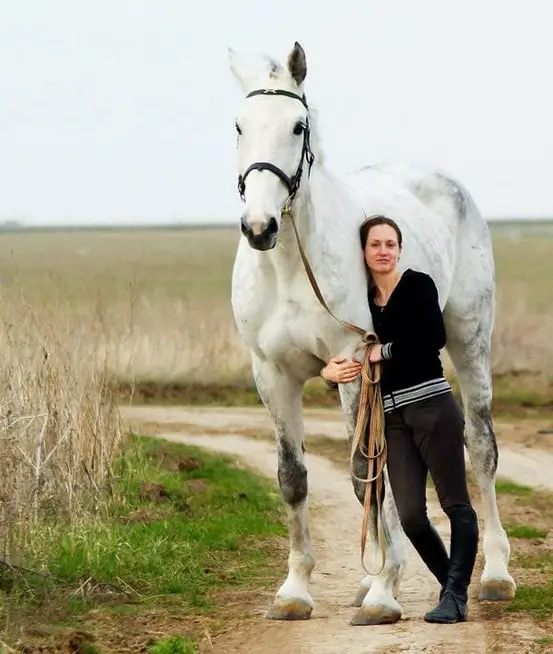
1. History and Origin
The horse originated in the Huisne river of France, former Perche province near Normandy. The name of the horse taken from this province name. The Arabian horse played a vital role in the development of the Percheron horse. The horse becomes popular shortly due to its size, behavior, beauty, and style.
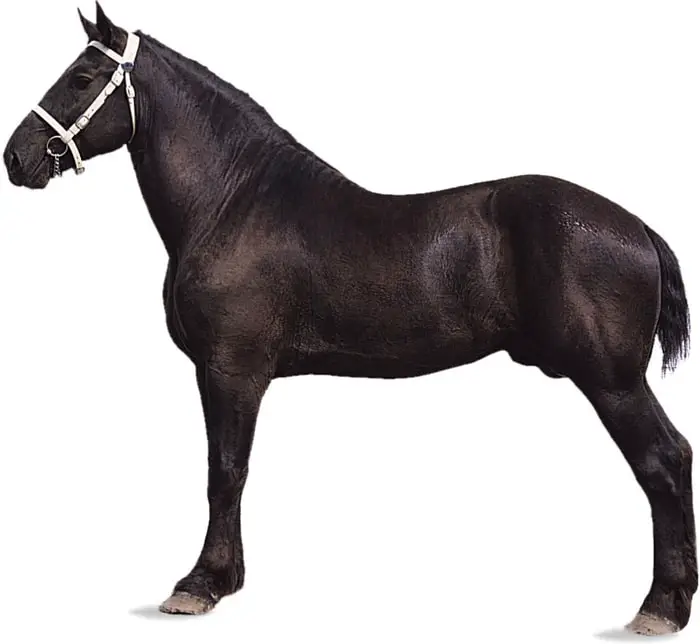
The horse was brought to the United States of America before the First World War. The breed had received blood from Andalusian, Arabian, and Boulonnais breeds.
2. Height and Weight
The height and weight of Percheron horse vary from country to country. In France, the horse’s size and height range from 15.1 hands to 18.1 hands (61 inches to 73 inches) and height from 1400 to 2600 pounds. In the United States, Percheron’s height range is 16.1 to 17.2 hands (65 to 70 inches) and an average weight of 1900 pounds (850 kg).
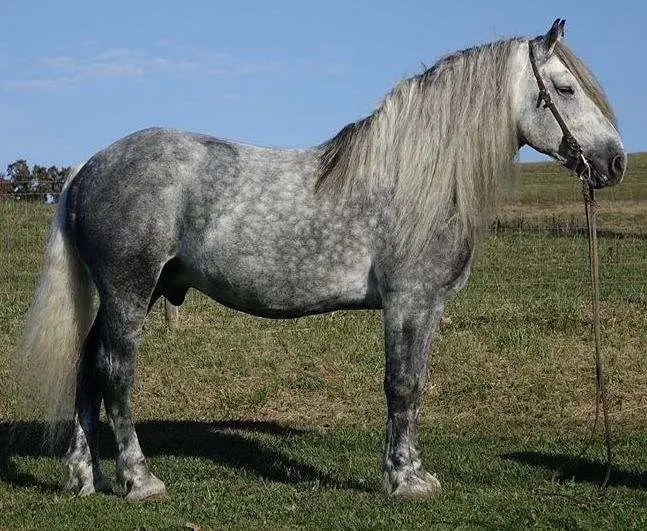
In Great Britain, the Percheron stallion’s shorted acceptable height is 16.2 and 16.1 hands for the mares. The average allowable size for the stallion is 2000-2200 pounds and 1800-2000 pounds for the mares.
3. Physical Characteristics
The horse is considered as easy keepers, and they can adapt in any climatic condition. The horse has a straight body profile, small ears, large eyes, and a broad forehead. The feet are heavily muscled and clean without feathers like Clydesdale. The chest of the horse is deep, and the coup is long and level.
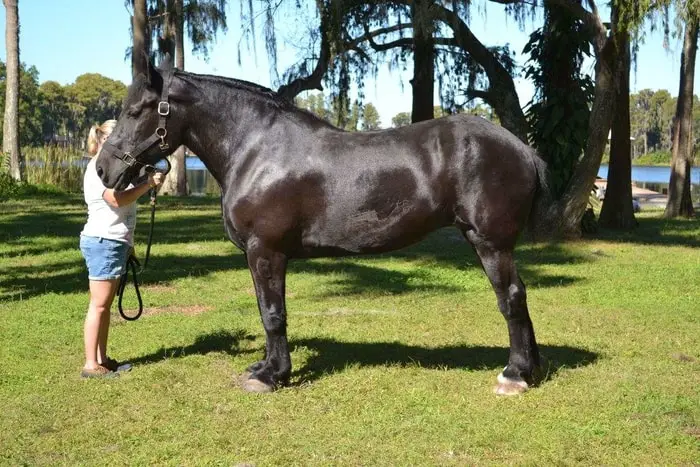
4. Behavior of Percheron Horse
The Percheron is intelligent, well-behaved, willing to work, and a good dispositioned horse. The horse is known as a gentle giant in the world of horses.
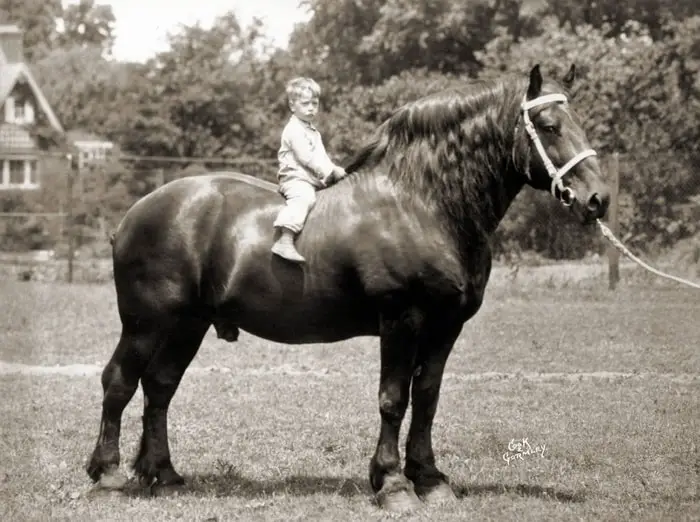
5. Color and Markings
The color of the horse usually black or grey. The American horse registry allows bay, roan, and chestnut colors of the horse. Only black and grey colors of the Percheron are registered in France and Britain. White markings on the head and legs are acceptable marking by the breed registry. The excessive markings are undesirable by the breed registry.
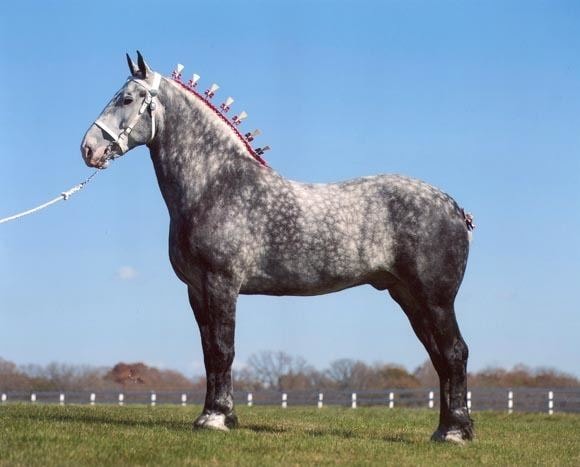
6. Breeding and Registration
The first pure Percheron studbook was created in 1883 in France. Before the WWI thousands of Percheron horse was shifted to the United States of America. The horse was extensively used in the war, and few horses were brought back to Europe. The United States Percheron Registry was established in 1934. In 1918, the Percheron started breeding in Britain, and the British Percheron Breed Society was formed.
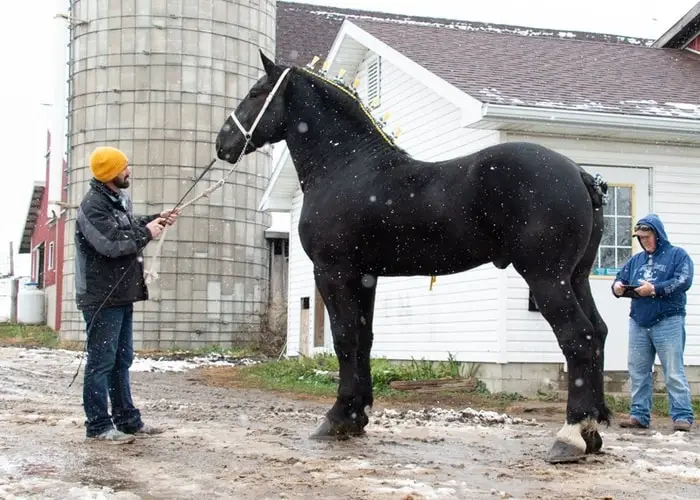
7. Diet, Nutrition, and Care
The Percheron horse requires little more diet and ration than average horses. The horses require at least 30 to 35 pounds of hay and 6 to 7 pounds of grain a day. The horse needs horse supplements with feed if the forage or pasture is lacking specific nutrients.
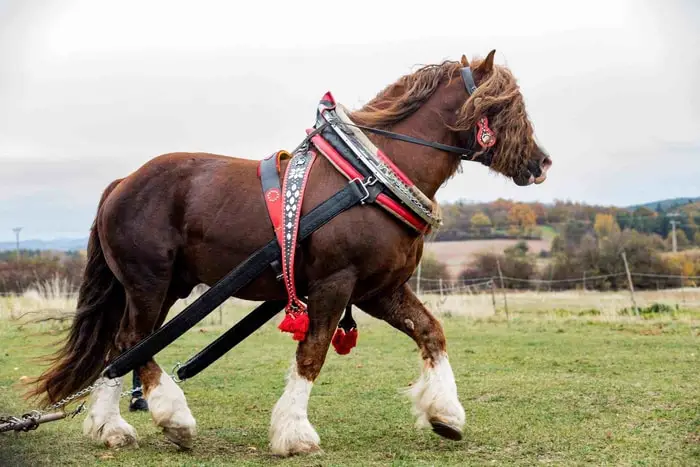
8. Health Issues and Care of the Horse
The horse is generally sound and healthy. The horse has very few health problems or diseases. The horse is often suffering from Equine Polysaccharide Storage Myopathy (PSSM) like other draft horses. The muscle cannot store an adequate amount of glucose; thus, muscle damage occurs. The disease is incurable, and you can manage the condition by proper nutrition management in the diet. The horse requires regular grooming and care, especially in the winter.
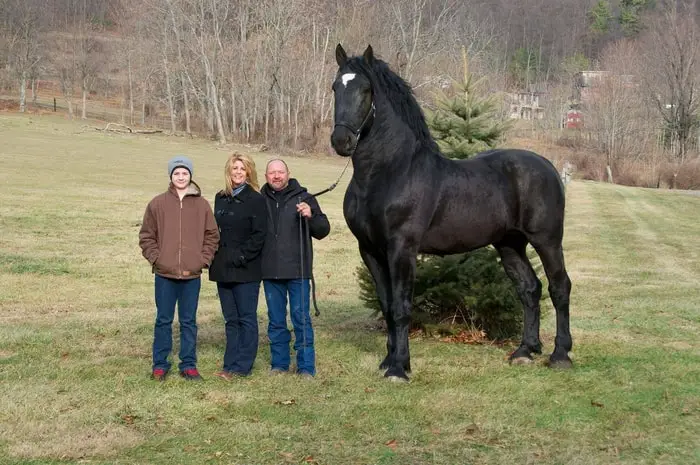
9. Special Features
Percheron is one of the giant horse breeds in the world. The unique features of the species are:
- The horse can run in the trot at a go 40 miles (65 km) in a day.
- The maximum height of the horse is 19 hands (76 inches).
- The legs of the horse have no feathers like Clydesdale.
- Grey or black is the most acceptable color for the horse.
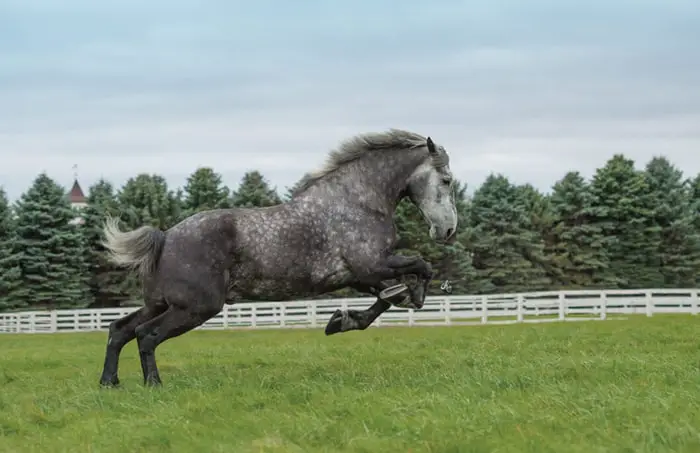
10. Uses of Percheron Horse
Percheron is one of the oldest horse breeds that has been used in many disciplines. The most versatile uses of Percheron horse are:
- They were used in WWI as a warhorse.
- Pulling carriage, hayrides, and sleighs.
- They are used for logging in farms for their bigger sizes.
- As they are docile and well-behaved, they can get a profitable horse for beginners.
- Many riders prefer them due to their willingness and adaptability.
- Western riding.
- Dressage.
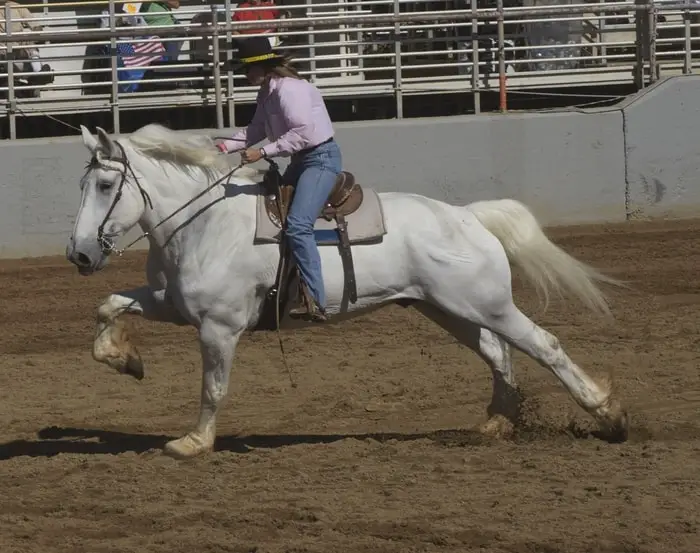
- Confidence building riding.
- They were used to develop both Vladimir Heavy Draft and Ardennes draft horse.
- In Great Britain, the horse was used for publicity and advertising works.
- In Australia, Percheron was used as a Police horse.
- Percheron Horse show held in Haras du Pin in France
Concluding Remarks on Percheron Horse
Percheron is an exciting horse breed for many horse lovers. The gigantic size, gentle behavior, easy adaptability, hard-working, and well muscular body make them famous. The horse has now been distributed to Great Britain, the USA, Australia, Europe, and many other parts of the world. The versatile uses make them more popular to many horse breeders. I think this article will make answer many of your questions.